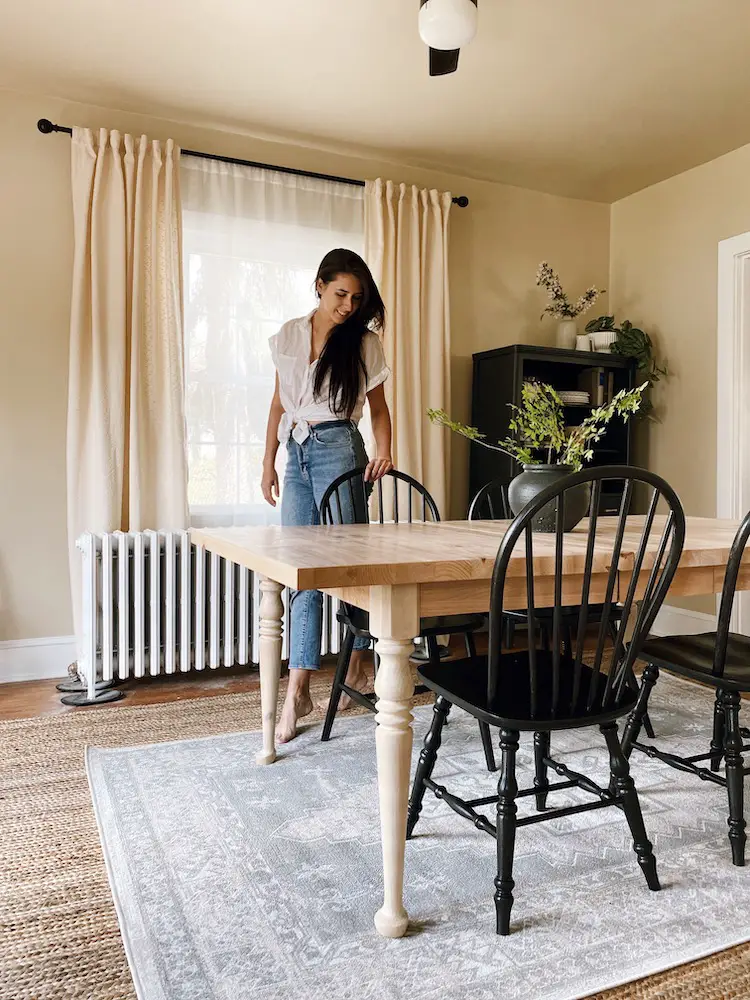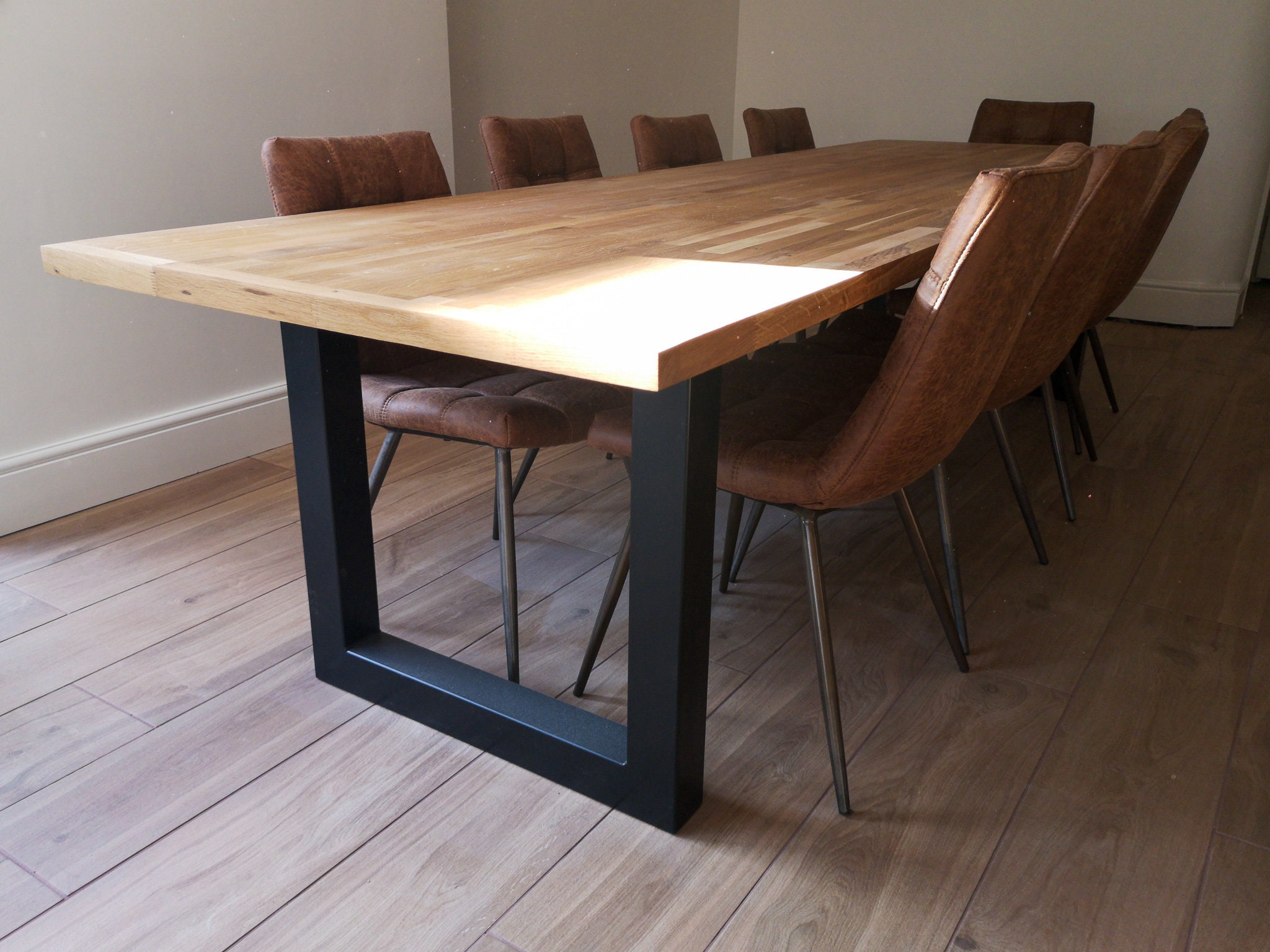The Ultimate Overview to Selecting Sturdy Dining Room Table Legs
The Ultimate Overview to Selecting Sturdy Dining Room Table Legs
Blog Article
An In-depth Consider Eating Table Leg Styles: Locating the Suitable Match
Selecting the appropriate table leg design is vital for both aesthetic allure and practical capability. Traditional 4 legs offer ageless style and security, while the pedestal base offers boosted legroom and a contemporary appearance. For those with bigger tables, trestle legs make sure tough support, whereas hairpin legs introduce a mid-century modern ambiance with their minimal design. The x-shaped legs mix modern design with enhanced security. Each of these choices brings distinct benefits, making the option much more than just an issue of choice. Discover further to find which style completely matches your dining room and lifestyle.
Traditional 4 Legs
Amongst the numerous types of dining table leg styles, the traditional four-leg design continues to be a classic option for several households. 4 legs give balanced support, making sure the table continues to be secure and qualified of birthing considerable weight (dining room table legs).
From an aesthetic point of view, the conventional four-leg style can be easily adapted to various interior styles. Whether crafted from timber, metal, or a mix of products, these legs can be elaborately sculpted, smooth and minimalistic, or anything in between. Their convenience enables them to complement both rustic and modern settings effortlessly.
Furthermore, the uncomplicated framework of the four-leg design assists in ease of movement and placement within a room. Unlike more facility bases, this design minimizes blockages, supplying adequate legroom for restaurants. In summary, the conventional four-leg dining table leg style weds enduring elegance with useful capability, making it an astute selection for those looking for both kind and function in their eating furnishings.
Stand Base
Usually celebrated for its elegant and space-efficient style, the pedestal base is a distinguished option to the traditional four-leg arrangement in dining table leg designs. Without corner legs, diners are managed higher freedom of movement, making it an ideal selection for round and oval tables that promote more intimate and comprehensive events.
Additionally, the stand base's central support can deal with significant weight, enabling making use of larger tabletops, such as marble or thick wood. This stamina coupled with its aesthetic flexibility makes the pedestal base a prominent selection in both traditional and contemporary indoor settings. It can effortlessly integrate with numerous design styles, from classic elegance to minimal modernity. The central column itself supplies a canvas for elaborate designs and imaginative expressions, including an element of aesthetic passion underneath the table. In summary, the pedestal base incorporates functionality with style, making it a fine-tuned and sensible option for diverse dining environments.
Trestle Legs
Trestle legs provide a robust and timeless structure for eating tables, identified by their horizontal cross-bracing and strong support light beams. Stemming from middle ages times, this style has progressed yet retained its vital framework, making it a perennial favorite in both typical and modern settings. The central trestle beam of light, often supported by 2 or more upright articles, provides outstanding security, enabling larger table sizes without the demand for extra legs.
A substantial advantage of trestle leg tables is the sufficient legroom they use. Unlike tables with four corner legs, the absence of obstructions at the table's sides provides unobstructed area for chairs and diners, improving convenience and accessibility. This makes trestle tables suitable for accommodating bigger events, whether in an eating space or a banquet hall.
The aesthetic flexibility of trestle legs is noteworthy. Readily available in a range of materials such as timber, metal, and composite, they can be ended up to match a large range of indoor designs. From rustic farmhouse to smooth modern designs, trestle legs can be customized to fit individual tastes. Their long-lasting appeal and practical advantages make trestle legs a compelling selection for those looking for both design and usefulness in their eating table.
Hairpin Legs

The charm of hairpin legs exists in their simplicity Continue and versatility - dining room table legs. Available in an array of products, consisting of steel and brass, they can be finished in countless shades to enhance different indoor designs. Whether coupled with a rustic wooden tabletop or a modern glass surface, hairpin legs effortlessly blend capability with a touch of vintage charm
Resilience is an additional notable attribute of barrette legs. In spite of their delicate look, these legs are engineered to birth substantial weight, making certain the eating table stays secure and secure. Furthermore, they are reasonably very easy to set up, making them a popular selection for do it yourself fanatics and expert furnishings makers alike.
X-Shaped Legs

Constructed from products such as steel, timber, or a combination of both, X-shaped legs can be customized to match various style preferences. Steel legs commonly lend a sleek and commercial feel, suitable for loft-style homes and modern eating rooms. On the other hand, wood X-shaped legs use a warmer, much more rustic appeal, suitable for farmhouse or eclectic insides. The flexibility in materials enables see this site homeowners to customize their table to better fit their general layout scheme.
Furthermore, the engineering behind X-shaped legs guarantees even weight distribution, minimizing the risk of tottering and improving resilience. This makes them especially well-suited for larger table that call for additional assistance. In essence, X-shaped legs mix useful engineering with modern aesthetics, making them a classic selection for varied eating environments.
Verdict
An extensive understanding of table leg designs exposes the distinctive features and advantages of each design. Traditional 4 legs provide security and timeless allure, while pedestal bases supply legroom and a structured appearance. Trestle legs make sure robust assistance for larger tables, and hairpin legs introduce a mid-century modern visual. X-shaped legs incorporate contemporary design with enhanced stability. Selecting the appropriate leg design guarantees both practical and visual contentment in any eating space.
Report this page